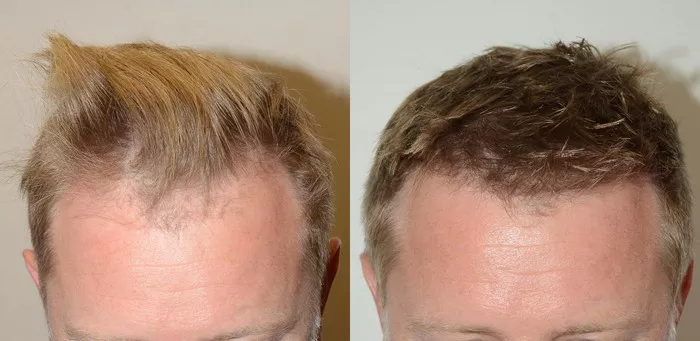If you’re considering a hair transplant, you likely have one pressing question on your mind: will hair grow after a hair transplant? Rest assured, this article will provide you with a thorough understanding of what to expect post-surgery. We’ll delve into the intricacies of hair transplants, recovery, and factors that influence hair growth. Read on to gain valuable insights into this transformative procedure.
Understanding the Hair Transplant Process
The hair transplant process involves harvesting hair follicles from a donor area, typically the back of the scalp, and transplanting them into areas with thinning or balding hair. There are two primary techniques: Follicular Unit Transplantation (FUT) and Follicular Unit Extraction (FUE). In FUT, a strip of skin with hair follicles is removed and dissected into grafts, which are then implanted in the recipient area. FUE, on the other hand, involves individually extracting hair follicles and transplanting them. Both techniques aim to create a natural-looking, fuller head of hair, and patients can expect gradual growth in the transplanted hair over several months.
See Also: 6 Tips Hiding FUE Hair Transplant: Getting Natural Results
The Initial Days After Surgery
Immediately after a hair transplant, you may experience some swelling and redness in the treated areas. These side effects are normal and typically subside within a few days.
1. Scab Formation
Within a week, small scabs will form around the transplanted grafts. It’s crucial to avoid picking or scratching these scabs, as doing so can damage the grafts and affect hair growth.
2. Shedding Phase
Around two to three weeks post-surgery, the transplanted hair will enter a shedding phase. This is entirely normal and should not cause concern. New hair growth will follow.
Is patience important after hair transplantation?
After a hair transplant, it’s important to exercise patience. Hair growth is a gradual process, and you may not see significant results immediately. Most patients start to notice new hair growth around three to four months post-surgery.
1. Growth Rate
The rate at which hair grows varies from person to person, but on average, you can expect approximately ½ inch (1.25 cm) of growth per month.
2. Full Results
To witness the full results of your hair transplant, you may need to wait for eight to twelve months. During this time, the transplanted hair will thicken and become more natural-looking.
Factors Influencing Hair Growth
Several factors can influence the success of your hair transplant and the subsequent growth of transplanted hair.
1. Age
Younger individuals often experience more successful hair transplants, as their hair tends to have better overall health and longevity.
2. Hair Quality
The quality of your donor hair is crucial. Coarse, thick hair tends to yield better results than fine, thin hair.
3. Post-Surgery Care
Following your surgeon’s post-operative care instructions meticulously is vital for optimal results. This includes avoiding strenuous activities and protecting the newly transplanted area from direct sunlight.
Maintenance and Long-Term Care
Once your transplanted hair has fully grown in, maintenance becomes essential to ensure its continued health and vitality.
1. Hair Care Products
Using mild shampoos and avoiding harsh chemicals can help maintain the health of your transplanted hair.
2. Regular Check-ups
Periodic visits to your hair transplant surgeon for check-ups and evaluations are essential to monitor your progress and address any potential issues.
Conclusion
In conclusion, the question of whether hair will grow after a hair transplant is answered with a resounding yes. However, it’s important to remember that patience is key, and results may take several months to become noticeable. By choosing a skilled surgeon, adhering to post-operative care instructions, and maintaining your newly transplanted hair, you can enjoy the benefits of a fuller, more natural-looking head of hair. Say goodbye to balding and hello to a confident new you!


